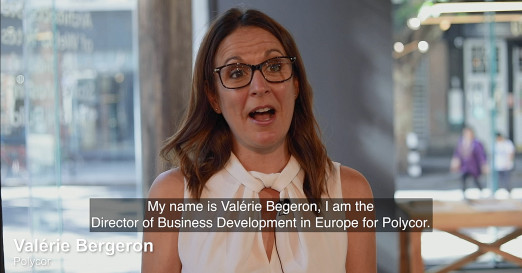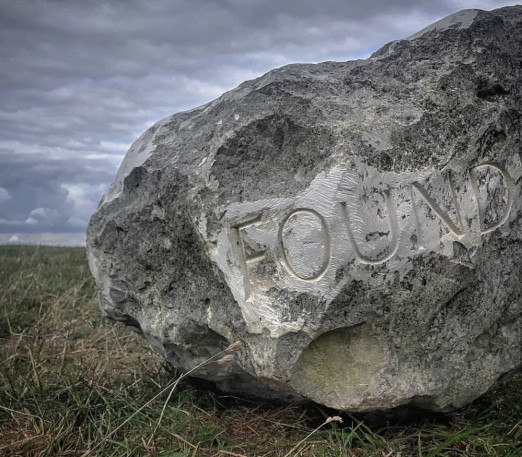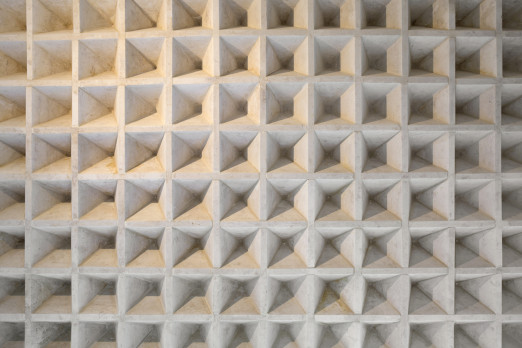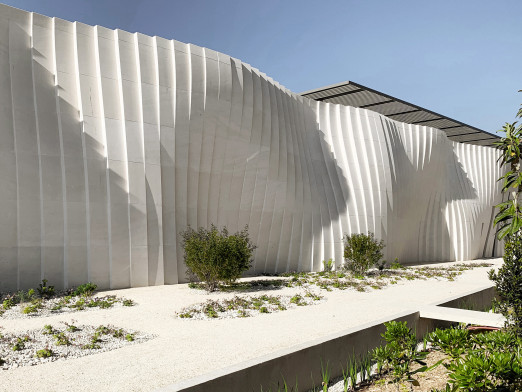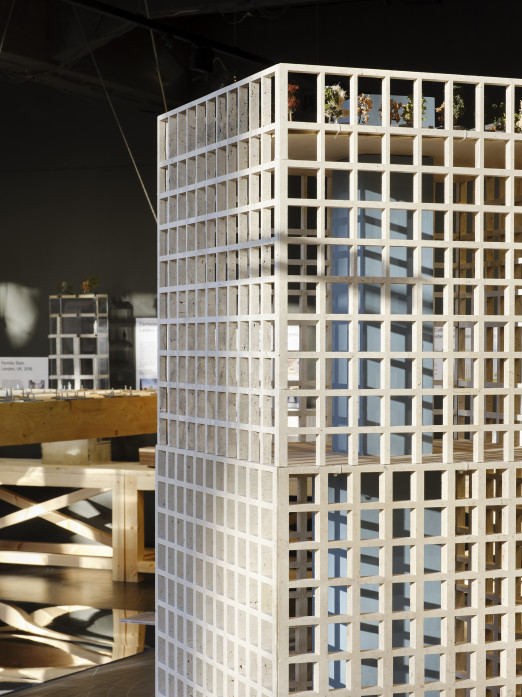Mimi Thompson looks back at The New Stone Age exhibition, our celebration of structural stone.
Before concrete and steel caught our architectural attention, stone was a primary choice for construction. Over the years it was passed over in favour of these new materials, and you may now associate stone with visions of antiquity or as ornamentation on a modern façade. But prepare to be converted by the three curators of the ‘The New Stone Age’ exhibition here at the Building Centre into believing in stone as a viable alternative in modern architecture.
We have been privileged to host a glimpse into the renaissance of stone as a load-bearing material, from cantilevered staircases to strikingly crafted wine cellars. A testament to what can happen when a traditional material collides with advances in both engineering and technology; our exhibition has shown the beauty of stone when used in modern construction. The past has been a good place to start when looking to the future – for example in the enduring qualities of London monuments such as St. Paul’s Cathedral and in the interiors of even older, medieval architecture where they managed to create these part-cantilevered, part reciprocal staircases without the luxury of modern technology. Yet for almost a century London’s skyline has been dominated by glass, steel and concrete. This exhibition has been a chance to showcase the reintroduction of stone in contemporary architecture.
Indeed when our French stonemason collided with our London-based architect, the former reacted with an element of surprise at stone being considered a luxury only… In France, building with stone is often seen as ‘austerity construction’. This statement is backed up by the fact that stone requires very little energy to extract and then build with, in comparison to concrete which leaves a carbon footprint 10x greater than that of stone. If we look for the silver-linings in a post-pandemic world then sustainability is surely one of them. Creating cleaner, low-carbon homes and public spaces is a worthy goal and one which can incorporate materials such as stone and timber. To quote Pierre Bidaud “it is not that stone is too expensive, it is that concrete is too cheap” – perhaps an accurate summary of a growing feeling in the world that throwaway culture has lasted far too long.
Choosing to build sustainably is a brave choice, opting to see beyond immediate gratification and use materials that might be a little more expensive but have longevity as well as usefulness and beauty. A concept that was certainly represented in samples and models here in the exhibition. To leave you with an example, I point you in the direction of Amin Taha’s 15 Clerkenwell Close, saved from the fate of demolition and gifted to the citizens of tomorrow instead. Its striking structural exoskeleton was a result of the three curators visiting the quarry in France where, struck by the natural forms found within the stone, fossils and ammonites as well as the raw surface of natural stone, they chose to trust the skills of the quarry masters in retaining these features ready to be transformed into the functional, load-bearing structure you will find here London today. All the examples in this exhibition are a testament to the future of stone as its potential is realised in contemporary, international architecture.
The New Stone Age exhibition was a celebration of structural stone; of its potential and beauty as well as its inherent sustainability. Curated by Amin Taha of Groupwork, Steve Webb of Webb Yates and Pierre Bidaud from The Stonemasonry Company Ltd, the exhibition surveys the contemporary use of structural stone.
We would like to thank our headline sponsors Polycor and The Stonemasonry Company Ltd.






